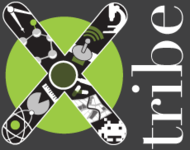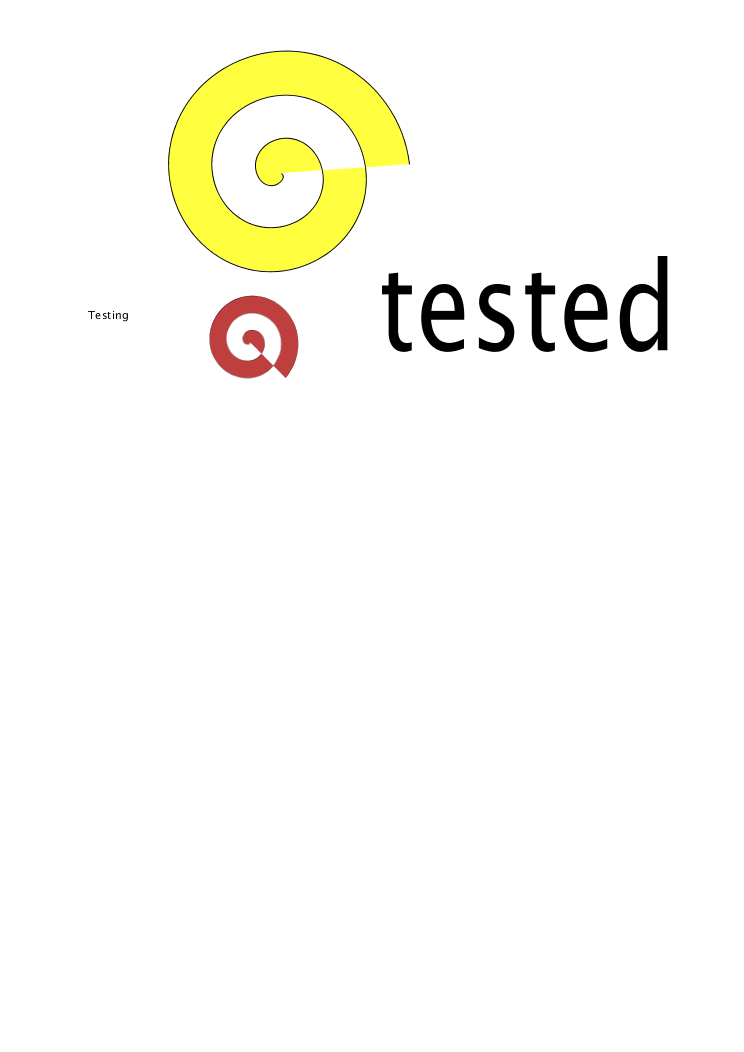Testing Sandbox: Difference between revisions
m (→Math) |
mNo edit summary |
||
| (18 intermediate revisions by the same user not shown) | |||
| Line 1: | Line 1: | ||
{{Citizen science infrastructure | |||
|field_project_name=Experimental tribe - Xtribe | |||
|field_project_access_URL=http://www.xtribe.eu/ | |||
|field_logo=XtribeLogo.png | |||
|field_project_description=Experimental tribe is a web platform for gaming and social computation. It helps researchers to realize web games/experiments and it let people join, while enjoying, the scientific research. | |||
|field_purpose_of_project=Experimental Tribe is a web platform designed for scientific gaming and social computation. In the last few years the Web has been progressively acquiring the status of an infrastructure for “social computing” that allows researchers to coordinate the cognitive abilities of users in online communities, and steer the collective action towards predefined goals. This general trend is also triggering the adoption of web-games as a very interesting laboratory to run experiments in the social-sciences and whenever the peculiar human computation abilities are crucially required for research purposes. | |||
Xtribe is run by a research team focused on the investigation of dynamical processes involving human beings, a series of research topics gathered under the denomination of Social Dynamics. The research team recently got funded by the Templeton Foundation for a project on "Unfolding the dynamics of creativity, novelties and innovation" . | |||
More about the research project: | |||
The project addresses the dynamics of novelties - a fundamental factor in the evolution of human societies, biological systems and technology- with the aim to unfold and quantify the underlying mechanisms through which creativity emerges and innovations diffuse, compete and stabilize. The project is timely due to the availability of extensive longitudinal records of human, social, biological and technological evolution. We shall exploit the unique opportunity offered by the combination of ICT tools for social computation with powerful analytical and modeling tools, by blending, in a unitary interdisciplinary effort, three main activities: web-based experiments, data science and theoretical modeling. Through this experimental, mathematical and computational framework we aim at providing the scientific community with a quantitative understanding of the determinants of creativity and innovation as well as a solid overarching scientific framework describing creativity in a quantitative and operational way. We hope to stimulate a bundle of new research lines in multiple academic and non-academic communities interested in quantifying and controlling the processes underlying creativity and innovation. By unveiling and quantifying the complex ecology of creativity and innovation, we also expect to impact sectors - education, learning, research, social challenges- where creativity and innovation are much needed fuels. | |||
|field_has_project_size=12 | |||
|field_team_leadermm=Vittorio Loreto | |||
|field_team_link=http://www.socialdynamics.it/ | |||
|field_contact_person=Vittorio Loreto | |||
|field_contact_person_URLs=http://socialdynamics.it/vittorioloreto/ | |||
|field_team_location=Rome, Italy | |||
|field_programming_languages=Any | |||
|field_online_development_tools=yes | |||
|field_support_team=N/A | |||
|field_support_documentation=yes | |||
|field_software=Citizen science custom software | |||
|field_member_profiles=N/A | |||
|field_project_news_site=http://doc.xtribe.eu | |||
|field_socialsoftware_sites=N/A | |||
|field_system_overview=The Platform In Depth | |||
XTribe has been designed with a modular structure through which most of the complexity associated to running an experiment is hidden into a Main Server, while the experimentalist is left with the only duty of devising a suitable interface for the actual experiment. In this way most of the coding difficulties related to the realization of a dynamic web application are already taken care by the ET Server and the realization of an experiment should be as easy as constructing a webpage with the main utilities for it. | |||
|field_completion_level=Medium | |||
|field_last_edition=2018/03/08 | |||
}} | |||
{{bibliography | |||
|field_author=S. Caminiti, F. Tria, A. Sirbu, V. Servedio, V. Loreto, P. Gravino, C. Cicali | |||
|field_date=2013 | |||
|field_title=XTribe: A web-based social computation platform | |||
|field_reference=S. Caminiti, F. Tria, A. Sirbu, V. Servedio, V. Loreto, P. Gravino, C. Cicali, XTribe: A web- , IEEE Proceedings of the Third International Conference on Social Computing and its Applications (2013) | |||
|field_link=http://people.cs.umass.edu/~wallach/workshops/nips2011css/papers/Cicali.pdf | |||
|field_publication_type=Conference papers | |||
}} | |||
{{Free text}} | |||
== Introduction == | == Introduction == | ||
[[Category: Testing]] | |||
This page is used to test some mediawiki stuff, in particular extensions. Some code in here may not work because the extension is disabled for various reasons. Testing ONE. | This page is used to test some mediawiki stuff, in particular extensions. Some code in here may not work because the extension is disabled for various reasons. Testing ONE. | ||
| Line 55: | Line 96: | ||
{3^m\left(m\,3^n+n\,4^m\right)}</math> | {3^m\left(m\,3^n+n\,4^m\right)}</math> | ||
Note: Some functions do not seem to work. Probably needs some custom installation. | |||
<math> \displaystyle\Q{}{t}\iiint\varrho d^3V+\oiint\varrho(\vv\cdot\vvec{n})d^2A=0 </math> | |||
== MetaUML test == | |||
This extension was killed for security reasons .... but may be back some day | |||
Test for the uml tag | Test for the uml tag | ||
| Line 129: | Line 171: | ||
activity2 -> activity4 -> endnode; | activity2 -> activity4 -> endnode; | ||
activity3 -> endnode; | activity3 -> endnode; | ||
} | } | ||
</graphviz> | </graphviz> | ||
| Line 187: | Line 228: | ||
Les [[wiki]]s sont | Les [[wiki]]s sont | ||
== Test citizen science template == | |||
Long citation from Caminiti et al. 2013:2). ''Should be documented apart as CS projects'' | |||
As case-study experiments, two games are already implemented in the platform: Nexicon and Blindate. Nexicon is a collaborative word association game: two players, who cannot communicate with each other, have to write a set of words they associate with a given word (the same for both players). They win as soon as both of them write a common word. The scientific outcome of the game is the possibility of constructing a sort of perceptual network of word association, much along the same line of well known word association databases. | |||
Blindate, instead, is a collaborative game, very close to the well known Schelling’s Games first introduced in the early ’60s [17]. In Schelling’s original version (one of many similar problems), two players, unable to communicate with each other, were asked to find a point on a map where to meet, i.e. they had to find a strategically salient “focal point” among a potential infinity of solutions to the coordination problem. Since Schelling’s seminal contribution, many versions of “Schelling games” have been used to investigate strategic salience, i.e. the individual ability to guess recursively what the other guesses that he will guess is salient, an so forth [18, 19]. In our custom version, two players are shown a portion of the map of a real city and are asked to point a location in a given area where they think it is more likely to meet each other. The reward is a score depending inversely on the distance between the guesses. In addition, after playing, participants may optionally explain with suitable tag words the reason of their choice. The purpose of the experiment is to get an annotated map of the focal points of the city. | |||
== Images test == | == Images test == | ||
| Line 209: | Line 261: | ||
== Infobox Software test == | == Infobox Software test == | ||
kill see march 2018 version | |||
[[Category:Uncategorized]] | [[Category:Uncategorized]] | ||
Latest revision as of 19:52, 8 March 2018
Cs Portal > List of citizen science infrastructures > Experimental tribe - Xtribe -(2018/03/08)
IDENTIFICATION
- Beta start date : N/A
- End date :
⇳ Description Experimental tribe is a web platform for gaming and social computation. It helps researchers to realize web games/experiments and it let people join, while enjoying, the scientific research. ➠ Purpose Experimental Tribe is a web platform designed for scientific gaming and social computation. In the last few years the Web has been progressively acquiring the status of an infrastructure for “social computing” that allows researchers to coordinate the cognitive abilities of users in online communities, and steer the collective action towards predefined goals. This general trend is also triggering the adoption of web-games as a very interesting laboratory to run experiments in the social-sciences and whenever the peculiar human computation abilities are crucially required for research purposes.
Xtribe is run by a research team focused on the investigation of dynamical processes involving human beings, a series of research topics gathered under the denomination of Social Dynamics. The research team recently got funded by the Templeton Foundation for a project on "Unfolding the dynamics of creativity, novelties and innovation" .
More about the research project:
The project addresses the dynamics of novelties - a fundamental factor in the evolution of human societies, biological systems and technology- with the aim to unfold and quantify the underlying mechanisms through which creativity emerges and innovations diffuse, compete and stabilize. The project is timely due to the availability of extensive longitudinal records of human, social, biological and technological evolution. We shall exploit the unique opportunity offered by the combination of ICT tools for social computation with powerful analytical and modeling tools, by blending, in a unitary interdisciplinary effort, three main activities: web-based experiments, data science and theoretical modeling. Through this experimental, mathematical and computational framework we aim at providing the scientific community with a quantitative understanding of the determinants of creativity and innovation as well as a solid overarching scientific framework describing creativity in a quantitative and operational way. We hope to stimulate a bundle of new research lines in multiple academic and non-academic communities interested in quantifying and controlling the processes underlying creativity and innovation. By unveiling and quantifying the complex ecology of creativity and innovation, we also expect to impact sectors - education, learning, research, social challenges- where creativity and innovation are much needed fuels.
COMMUNITY
- Communication:
- Social Network: N/A
- Main news site: http://doc.xtribe.eu
- Visibility of member profiles:: N/A
- Member profile elements:
⏣ Description
DEVELOPERS
- Uses Citizen science software:Citizen science custom software
- Provides online tool to create applications: yes
- Provides support team for development: N/A
- Provides documentation for development and hosting: yes
Rome, Italy
♜ DEVELOPERS TEAM
Official team page:
Leader: Vittorio Loreto
Contact: Vittorio Loreto http://socialdynamics.it/vittorioloreto/
+ Information about the team
OVERVIEW
▣ SYSTEM OVERVIEW
The Platform In Depth XTribe has been designed with a modular structure through which most of the complexity associated to running an experiment is hidden into a Main Server, while the experimentalist is left with the only duty of devising a suitable interface for the actual experiment. In this way most of the coding difficulties related to the realization of a dynamic web application are already taken care by the ET Server and the realization of an experiment should be as easy as constructing a webpage with the main utilities for it.
| BIBLIOGRAPHY |
Introduction
This page is used to test some mediawiki stuff, in particular extensions. Some code in here may not work because the extension is disabled for various reasons. Testing ONE.
Testing a new file caching config - july 2013
an external URL tecfa
Collaboration diagram
Two pages <collaborationdia page="Cognitive_apprenticeship;Writing-to-learn"/>
One with a namespace (will break)
RAW
http://edutechwiki.unige.ch/mediawiki/index.php?title=Web_browser&action=raw
Shoutbox test
Extension from http://jimbojw.com/wiki/index.php?title=ShoutBox_Extension
{{#shoutbox:31090|300|300}}
Problem is that anyone from any site can read/post to this id. It would be a good idea to use this code and use a proper php shoutbox something. I have to decide whether to enable or disable yet. Disabled for the moment ....
PageBy test
Default <pageby/>
All minor edits, but no comments <pageby comments="false"/>
No anon, no comments, no creation <pageby noanon="true" comments="false" creation="false"/>
AnyWikiDraw test
{{#drawing:test-image.svg|300|200}}
Breaks, can't find the file.
Math
The math tag allows to enter complex latex formula.
Note: Some functions do not seem to work. Probably needs some custom installation. Failed to parse (SVG (MathML can be enabled via browser plugin): Invalid response ("Math extension cannot connect to Restbase.") from server "https://wikimedia.org/api/rest_v1/":): {\displaystyle \displaystyle\Q{}{t}\iiint\varrho d^3V+\oiint\varrho(\vv\cdot\vvec{n})d^2A=0 }
MetaUML test
This extension was killed for security reasons .... but may be back some day
Test for the uml tag
Diagrams error (with plantuml command): /bin/bash: line 1: plantuml: command not found
Graphviz extension test
See version 22146 (18:52, July 10 2009) for more code....
CoUML

Top contributors
<topcontributors />
various tests
Bla bla bla bla test after crash .... sandbox2 .. for wilder tests
test after recompil de mysql
Testing my new name: Daniel K. Schneider
Testing (Access restricted)
testing IP registration in recent changes log
template test
He said “no”
- Is this true ???
I don't believe this:
- bla
- bla
Here is some text:
dfsajaéfdlkfdaj éadflkjfda adfjfdaélkjafd
I don't believe this:
- bla
- bla
Slides extension test
- Code commented because CSS problems
a b c d d -> e
Les wikis sont
Test citizen science template
Long citation from Caminiti et al. 2013:2). Should be documented apart as CS projects
As case-study experiments, two games are already implemented in the platform: Nexicon and Blindate. Nexicon is a collaborative word association game: two players, who cannot communicate with each other, have to write a set of words they associate with a given word (the same for both players). They win as soon as both of them write a common word. The scientific outcome of the game is the possibility of constructing a sort of perceptual network of word association, much along the same line of well known word association databases.
Blindate, instead, is a collaborative game, very close to the well known Schelling’s Games first introduced in the early ’60s [17]. In Schelling’s original version (one of many similar problems), two players, unable to communicate with each other, were asked to find a point on a map where to meet, i.e. they had to find a strategically salient “focal point” among a potential infinity of solutions to the coordination problem. Since Schelling’s seminal contribution, many versions of “Schelling games” have been used to investigate strategic salience, i.e. the individual ability to guess recursively what the other guesses that he will guess is salient, an so forth [18, 19]. In our custom version, two players are shown a portion of the map of a real city and are asked to point a location in a given area where they think it is more likely to meet each other. The reward is a score depending inversely on the distance between the guesses. In addition, after playing, participants may optionally explain with suitable tag words the reason of their choice. The purpose of the experiment is to get an annotated map of the focal points of the city.
Images test
A big svg picture
SVG test - This seems to work (needs a better ImageMagik installation or something ...)
SVG as a thumbnail
Testing of a new ImageMagick install
ok seems to work
Infobox Software test
kill see march 2018 version







